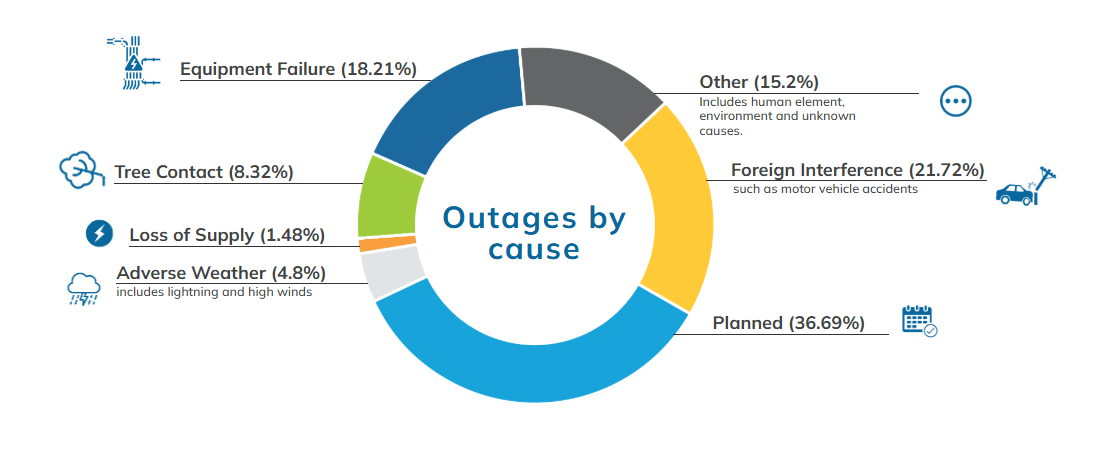
High winds, thunderstorms, ice, and snow, can lead to unplanned power outages We want to help you and your family prepare for unexpected outages and emergencies by providing you with the tools you need to create an emergency preparedness kit and ensure your home is safe if the lights go out.
Additional Emergency Preparedness Resources
If your power has gone out, or you’re having issues with your home’s electricity, please check the online outage maps for current outage updates.
If you live in Kitchener or Wilmot see your online outage map here. If you live in Waterloo, Wellesley, or Woolwich, you can access the online outage map here.
If you do not see your outage listed, call us at 226-896-2200 to report your outage.
Power Outage Safety Tips
If the power does go out at your home or business, there are several things you can do to help avoid electrical hazards and ensure our crews can work safely as they try to restore your power and repair damaged equipment:
Additional Outage Safety Resources
We want to help you learn as much as you can about power outage safety. Below is a short list of resources that can assist you during a power outage:
Once a storm has ended and powerline technicians have begun to restore power to impacted customers, there are still electrical safety hazards that you need to watch for. There are a number of things you can do to help your neighbours, your family, and our technicians continue to stay clear of hazards following an unplanned power outage.
There is damage to the electrical equipment attached to my home, how do I have it repaired?
If there is damage to the equipment that connects your home to the electricity distribution system, we may not be able to restore your power until repairs are made. Even if you do have power or never lost it, you may still have damage that needs repair.
Typically, a homeowner’s ownership of electrical equipment begins where the wires attach to the house. This means the wire from the pole to the house is generally our responsibility, but the wires inside the mast/stack and equipment attached to the house belong to you, the homeowner. If this equipment is damaged, you need to arrange repairs before we can safely reconnect power. You should start this process immediately.
There are four steps to get repairs done:
Please see this handout for detailed information on making repairs to your electrical system and the types of damage you may experience following a storm.
Providing safe and reliable electricity to homes and businesses is one of our top priorities. We work daily to improve our system, and repair and replace equipment.
Our efforts have led to a decrease in both the length and frequency of power interruptions, but interruptions do happen.
A variety of factors can cause power outages. Small animals, like squirrels, sometimes chew into lines or come into contact with a piece of equipment and an energized line, which results in their demise and likely a power interruption for you. Severe weather, including wind, snow, ice and lightning, also leads to unplanned power outages. Equipment failure, tree contacts and damage caused by excavations can also lead to unplanned power outages.
 What is Enova doing to limit outages?
What is Enova doing to limit outages?
Innovation and automation: Through the use of system automation including our Fault Location Isolation and Service Restoration software, and the use of more than 220 smart devices across our service territory we’ve limited the duration and severity of outages by more than 594,000 minutes.
Online:
enovapower.com/contactus
Phone:
226-896-2200
All Rights Reserved
Site design by Big Creative
Enter your address below to determine your service location for outage information, accessing forms and managing your account.
To better serve you, and make it easier for customers to find the information they’re looking for, we’ve introduced this helpful search tool that will allow you to find the rates, processes, and forms that apply to your account and your community. If you have additional questions regarding this, please email us at customercare@enovapower.com.